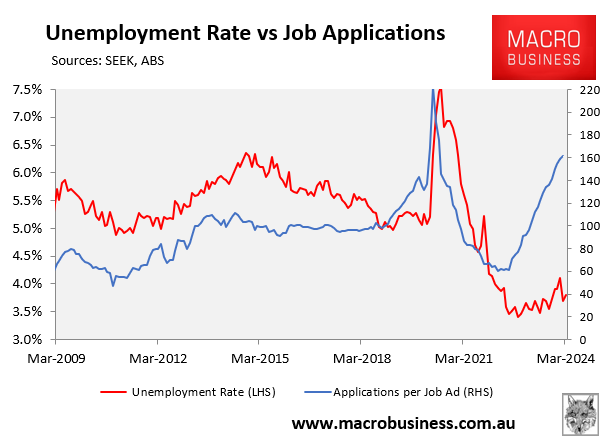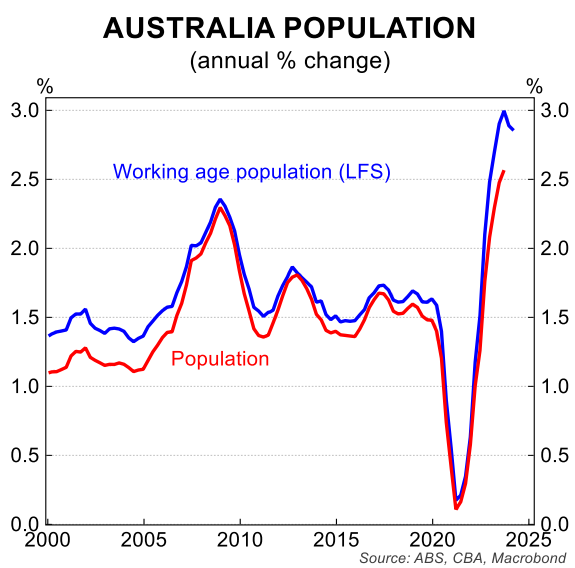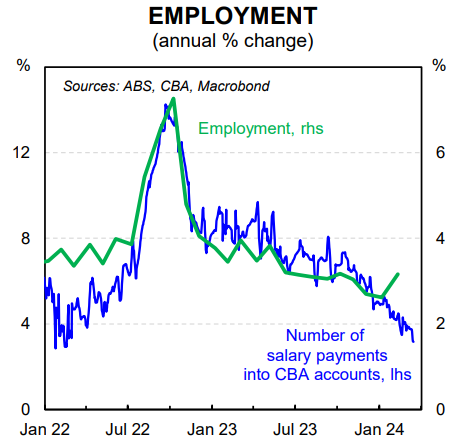I have argued repeatedly that the official Australian Bureau of Statistics (ABS) unemployment rate of 3.8% flies in the face of broader labour market data and the per capita recession afflicting the economy.
Most notable among these is the surge in the number of applicants per job ad recorded by Seek, which historically would correspond with much higher unemployment:

As illustrated above, the number of applicants per job ad is tracking around 60% higher than pre-pandemic levels.
This reflects the combination of falling job ads and the record rise in labour supply caused by the unprecedented surge of net overseas migration and the coming of age of Peter Costello’s Baby Bonus generation.

According to separate data based on the quantity of salary payments made into CBA bank accounts, job growth should have decreased sharply rather than increased as the ABS reported:

On Thursday, Justin Fabo at Antipodean Macro posted the following chart showing that Australian Google searches for “redundancy” has surged, indicating trouble ahead for the labour market:

Last month, the Financial Times warned that official data produced by government statistical agencies is likely understating the weakness of labour markets and giving false signals to central banks:
“Employment figures are being closely watched by central bankers around the world as they try to work out when to cut interest rates this year. There is just one problem: the data might be dodgy”.
“Swings in immigration, rapid changes to working conditions in the wake of the pandemic and lower participation in polls are combining to create a big problem for labour market statisticians”.
“Economists are increasingly questioning whether official reports can be relied upon for an accurate read of the labour market”…
“Economists and policymakers in the UK and US are doing their best to patch together a coherent view of their labour markets by looking at a broader range of surveys and alternative data”.
Perhaps the ABS survey is unable to accurately capture the record numbers of migrants landing in Australia, resulting in inaccurate job figures?
Because the ABS’s official unemployment rate seems to be significantly out of line with reality.

